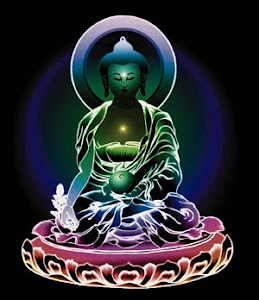The Concept of Unconscious Mind according to Sigmund Freud
>> Sunday, September 26, 2010
Introduction
As one the great psychologist Sigmund Freud was born May 6, 1856, in small town, Freiberg- in Moravia. He father was very good sense of humor. His mother had a second husband and Freud had two older half-brothers and 6 younger siblings. Later on, they moved to Vienna, where Sigmund Freud grow up and discover his theory of Unconscious mind. As the time passed, he became a doctor and started to treat his patients, also slowly he started to investigate and discover the theory of the unconscious mind to treat his patients. Actually, what Freud is referring to his method of free association, which he used in his practice as a way into a patient’s unconscious. Ideational elements are thoughts, memories, motives, and other unconscious lumber. In this way, he finally discovered the function of the unconscious mind and the nature of the Unconscious mind.
Summary of the Unconscious Mind
In 1938, during the last year of his life Sigmund Freud was old and sick but his mind was still sharp. He said; “I discovered some important new facts about the unconscious…Out of these findings grew a new science, psychoanalysis.”[1] Freud suggests that all our behavior is motivated by the desire to feel pleasure. That motivation is organized and directed by two instincts: sexuality, and aggression. Freud conceptualized both these instincts as being powered by a form of internal psychic energy that he called the libido. Libido is the pleasure principle, or basic psychic energy. It can perhaps be considered equivalent ch’i or parana[2] of esotericism and yoga.[3] So from this point we understand that with psychoanalysis Sigmund Freud opened the doors to the unconsciousness. Forever changing the way we view the human mind.
Here, in the concept of the psychoanalysis theory of personality developed by Freud that focuses on repression and unconscious forces and includes the concepts of immature sexuality, resistance, transference, and division of the psyche into the id, ego, and superego. In explaining the interactions between the various parts of the psyche, Freud suggested several overlapping theories: the economical (the hydraulics of unpleasure-avoidance through pleasure), the dynamic (libido movements through id, ego and superego), and the topographic (psyche as structured into conscious, preconscious, and unconscious layers).[4] Of these psychic structures the id (literally the "It") is the source of libido, and the only structure present at birth. The Id thinks primarily in visual and irrational terms - called primary process thinking.[5] Ego is that part of you that is interacting with the outside world at any moment. We all have different ego types, different "sides" to our personality, or ego-states that we use to consciously interact with the world; we use different ego-states and combinations of ego-states depending on circumstances, e.g., at work, with family, or meeting strangers. Genetics, childhood experiences, social pressures and other psychological factors shape these interconnected ego-states.[6] Finally, the superego is divided into two parts - the conscience, which contains the internalized taboos, and the ego ideal, which contains the internalized ideal aims and goals. The learned societal conventions, morals, etc. are here.[7]
Psychologist Sigmund Freud explained the fact that the motivation of perception can continue for some time so that in the path of it the perception of them can be repeated. The whole position can be clearly seen from the conscious perception of our intellective processes; it is true that these may continue, but they may just as easily pass in a flash. Everything unconscious that behaves in this way, that can easily exchange the unconscious condition for the conscious one, is therefore better described as “capable of entering consciousness,”[8] or as preconscious. There are other mental processes or mental material which have no such easy access to consciousness, but which must be inferred, discovered, and translated into conscious form in the manner that has been described. It is for such material that we reserve the name of the unconscious proper.
According to the Sigmund Freud, he ascribed that there are three qualities to mental processes: either conscious, preconscious, or unconscious. The partition between these three qualities of material which have these qualities is neither absolute nor permanent. As Sigmund Freud stated that what is preconscious becomes conscious, as we have seen, without any activity on our part; what is unconscious can, as a result of our efforts, can be made conscious, though in the process we may have an impression that we are overcoming what are often very strong struggles.[9] So when we try to make an effort to someone else, we must not to forget that the conscious filling up of the breaks in his perceptions. The construction which we are offering him does not so far mean that we have made conscious in him the unconscious material in question. All that is so far true is that the material is present in his mind in two versions, first in the conscious reconstruction that he has just received and secondly in its original unconscious condition.
Sigmund Freud vast influence was an arguable turns around his basis claim that most of our behavior is a product of an unconscious but very active part of the mind. For Sigmund Freud, he view that this unconscious is full of unacceptable urges, painful memories, conflicts, defense mechanisms, and so forth. In the history of ides of important Sigmund Freud is that therapy was imagined as a means of opening the black box of the unconscious. In general Freud wanted to know about the unconscious as a psychologist. What structures, forces, processes are found in every mind’s unconscious part? As a psychiatrist Sigmund Freud wanted to know more about a given patient’s unconscious. What is in there that might account, in psychoanalytic theory, for that patient’s symptoms? Sigmund Freud believed that his method was at once a way to investigate a given patient’s unconscious and a way to investigate the unconscious generally.
As far as we know an important principle of Freud’s system is that psychopathology, a word that for Freud covered a much broader territory than its current meaning of mental illness is not limited to neurotics, but manifests itself in seemingly innocent and meaningless everyday occurrences such as slips of the tongue, errors in reading and writing, and forgetting. In a logical tour de force[10], Freud leads him through a series of associations that illuminate the unconscious motive for forgetting that word.
Exploring the Unconscious Mind
The late 18 hundred marked as the Victorian age, a period extreme of rhetorical restrictions. Any expression of human sexuality was considered an out race. Respectable woman only went to their doctor with the sporran, personal matters was never discourse in polite society. Professional therapist didn’t exist and people with psychological problems had no where to go. Mental patients were treated like out caste. They were put in a silence and receive antiquated and even some cases even barbaric care. Treatments included alternative hot and cool bags, lengthy period of drags induce and sleep and in some cases brain surgery that resulted in death. There was a myth of this in 1886; Doctor Sigmund Freud began treating patients with a simple but reticle approach, he listened. Freud’s goal was to get his patients to talk as much as possible about anything and everything. In Freud office no subject was taboo. But rather than interview them in face to face, he had a patient lay down on a coast turn away from him. So that they would be more comfortable in reviling in their deepest thoughts. If his methods seems peculiar but the theory behind them were even more outlandish. Sigmund Freud developed a revolutionary new way of thinking about the human mind. He introduced the idea of the unconscious. Freud believed that “the unconscious is place where we bury conflicts such a painful memories or unaccepted thoughts that we do not want to deal with and this can make conscious life more difficult.”
According to James Maas[11], he said that “Sigmund Freud said that the unconscious is the real us bury down like the bottom of an iceberg. All we see is the tripe of the iceberg above the surface of the ocean, that’s the present day us. But what really makes us is down stair the sub-conscious. We are driven by sexual desire for example, but trying to somehow affect our behaviour.”[12]
Freud was convinced that his patients could bring their refresh thought through conversations. They would have to confirm them. This alone can diminished their anxieties and event surely relief them of their symptoms.
According to Elisabeth Young-Bruehl,[13] she said that this Centrum notion of the unconscious mind, is the one every one has to deal with, whether they accepted or rejected. They can’t ignore it. There are many ideas within the history of ideas that have that kind of galvanizing power.[14]
Later on, Sigmund Freud, in his is way of life while treating patients with his utmost effort of experiments done with different types of patients. In his efforts of better access his unconscious mind, Freud discovered a home new road to the unconscious, the dream. Over time he faradized the dreams were place where minds runs unsensed playing out thoughts and memorizes we dare not to discuses in the waking world. Freud believed dreams could provide him with remarkable access to the request thought to his own mind as well as his patients.
The Nature of Unconscious Mind
Concerning the ideas of the psychology, those psychologists during the times of Sigmund Freud, they have the ideas that, all the psychodynamic theorists generally stick to five basic propositions. They are as follows:
1. First, and most central, much of mental life--including thoughts, feelings, and motives--is unconscious, which means that people can behave in ways or develop symptoms that are inexplicable to themselves.
2. Second, mental processes, including affective and motivational processes, operate in parallel so that, toward the same person or situation, individuals can have conflicting feelings that motivate them in opposing ways and often lead to compromise solutions.
- Third, stable personality patterns begin to form in childhood, and childhood experiences play an important role in personality development, particularly in shaping the ways people form later social relationships.
- Fourth, mental representations of the self, others, and relationships guide people's interactions with others and influence the ways they become psychologically symptomatic.
- Finally, personality development involves not only learning to regulate sexual and aggressive feelings but also moving from an immature, socially dependent state to a mature, interdependent one.[15]
Not only that but also we can see that the psychologists focuses on the ideas of conscious mental processes or overt behaviour or moving in a very different direction. Those psychologists believe that the characteristic of human psychology was neither mental processes nor the behaviour that we human beings aware of, but to a certain extent those mental process we are unaware of. In this way, in the filed of psychology, psychologists pay attention to the unconscious Mind.
As a psychologist Sigmund Freud was a unique person that time among those other psychologists. So what he discovered was the main door of the opposite of Conscious mind that is the Unconscious mind. The theory of that Unconscious mind that Sigmund Freud believed was “Conscious mental processes were of trivial importance compared with the workings of the Unconscious mind. Sensation, learning, memory, and other cognitive processes so important to the other founding psychologists were of little interest to Freud. Freud felt that the roots of the psychological problems that he tried to treat were innate motives, particularly sexual and aggressive ones that reside in an unconscious part of the mind. He believed that these unconscious motives and the conflicts that surround them influenced our behaviour, even through we do not know they exist.”[16]
At one time Sigmund Freud argues that much of our psychic energy is devoted either to finding acceptable expressions of Unconscious ideas or keeping them unconscious. He created his notion of the unconscious from the study of slips of the human tongue, our dreams, neuroses, psychoses, works of art and rituals.[17] According to the psychoanalytic theory, our mental life is divided into three levels of Awareness that I talk above in this paper. So they are as:
i. Unconscious-System – It is one of the largest portion of our mind that formed by it and only a very small part by the Conscious.
ii. Preconscious-System – It stands like a partition screen between the unconscious-system.
iii. Consciousness – It is the conscious mind is like the tip of an Iceberg, with its greatest part – the unconscious – submerged.[18]
In accordance with the theory of Psychoanalytic is essentially a motivational theory of human behaviours and Sigmund Freud declared that psychoanalysis aims at and achieves nothing more than the discovery of the unconscious in mental life.[19] The unconscious processing goes on in the mind of humans, not because we have to filter out threatening stimuli and impulses, but because many cognitive operations go on without conscious participation. Our brain operates in this way in order not to flood the conscious part of the mind with impressions. The unconscious is a type of process, a way of constructing perception, memories and other kinds of cognition, not a portion of the mind. This view agrees with Roger's concept of the unconscious, who theorized that the unconscious is only a part of the phenomenological field and does not control our personality.
So what we understand about the Unconscious mind from the theory of Sigmund Freud is what we are aware of at any particular moment, our present perceptions, memories, thoughts, fantasies, feelings, what have we. Working closely with the conscious mind is what Freud called the preconscious, what we might today call "available memory:" anything that can easily be made conscious, the memories we are not at the moment thinking about but can readily bring to mind. Now no-one has a problem with these two layers of mind. But Freud suggested that these are the smallest parts!
Also the major part by far is the unconscious. It includes all the things that are not easily available to awareness, including many things that have their origins there, such as our drives or instincts, and things that are put there because we can't bear to look at them, such as the memories and emotions associated with trauma.
In accordance with the ideas of the Sigmund Freud, I believe the unconscious is the foundation of our motivations, whether they be simple desires for sex or food, neurotic compulsions, or the motives of an artist or scientist. Yet we are often driven to reject or resist becoming conscious of these motives, and they are often available to us only in disguised form.
Conclusion
From my opinion I understand that in 1938, Sigmund Freud start to treat his patients and around in 1886 he discovered the concept, the theory of the Unconscious. As far as I understand Sigmund Freud understand the Unconscious and he believed that the Our Unconscious is the place where we hide conflicts of our painful memories and unaccepted thoughts that we don’t want to talk or deal with and all these makes our conscious life more harder. To understand better the Unconscious process Sigmund Freud, he ascribed that there are three qualities to mental processes: either conscious, preconscious, or unconscious.
Finally, his essential theory of the Unconscious mind is the theory of that Unconscious mind with Conscious mental processes that were of trivial importance compared with the workings of the Unconscious mind. Sensation, learning, memory, and other cognitive processes so important to the other founding psychologists were of little interest to Freud. Freud felt that the roots of the psychological problems that he tried to treat were innate motives, particularly sexual and aggressive ones that reside in an unconscious part of the mind. That is what we are aware of at any particular moment, our present perceptions, memories, thoughts, fantasies, feelings, what have we. Working closely with the conscious mind is what Freud called the preconscious here, what we might today call "available memory" anything that can easily be made conscious, the memories we are not at the moment thinking about but can readily bring to mind.
I believe the unconscious theory of Sigmund Freud is the foundation of our motivations, neurotic forces and is the roots of the psychological problems that he tried to treat were innate motives, particularly sexual and aggressive ones that reside in an unconscious part of the mind of his patients.
[1] Sigmund Freud Documentary Movie, Produced and Written By Adam Strernberg, Associate Producer: Kristin Pichaske, Editor: Joe De Francesco; Copyright 2007 Lucasfilm Ltd. & TM.
[2]Chi or parana is power of training that help you to use your energy for literallyanything, supercharge the laws of attraction, heal yourself and others, progress at a much faster rate, learn focus, control and develop power.
[3] Kheper, Psychoanalytical Psychology, http://www.kheper.net/topics/psychology/Freud.html - Viewed on - 12/09/2010
[4] Ibid. See the footnote: - 3
[5] Ibid. see the footnote: - 3.
[6] P-i-a, Psychic Energy and Remote Viewing, Issue 25: July - December 2005, http://www.p-i-a.com/Magazine/Issue25/Connections_25.html - viewed on 12/09/2010
[7] Ibid. see the footnote: - 6
[8] Anupamm, Sigmund Freud, "The Structure of the Unconscious", http://anupamm.tripod.com/freudst.html - Viewed on - 26/08/2010
[9] Sigmund Freud Documentary Movie, Produced and Written By Adam Strernberg, Associate Producer: Kristin Pichaske, Editor: Joe De Francesco; Copyright 2007 Lucasfilm Ltd. & TM.
[12] Ibid. See the footnote:- 3
[13] Elisabeth Young-Bruehl- Author, Anna Freud: A Biography.
[14] Ibid. See the Footnote:- 3
[15]Drew Westen, The Scientific Legacy of Sigmund Freud: Toward a Psychodynamically Informed Psychological Science, Harvard Medical School and the Cambridge Hospital/Cambridge Health Alliance; http://webcache.googleusercontent.com/search?q=cache:IscVawIdeS0J:www.psychsystems.net/lab/scileg.pdf+Psychoanalysis+was+once+a+single+theory,+identified+with+its+founder+and+his+particular+ideas,+so+that+summarizing+its+basic+tenets+was+once+less+problematic.&cd=5&hl=en&ct=clnk&gl=th – Viewed on 26/08/2010
[16]Benjamin B. Lahey, - Psychology: An Introduction, 7th ed., Published by McGraw-Hill, an imprint of The McGraw-Hill Companies, Inc., 1998, Copyright in 2001, in New York.
[17] Pervin & Oliver, 1997
[18] Peter Prevos, Hidden Personalities According to Freud and Rogers, 2005. http://prevos.net/ola/hidden_personalities.pdf - Viewed On 30/08/2010
[19] Cited in: Pervin and Oliver (1997, 71).













0 comments:
Post a Comment